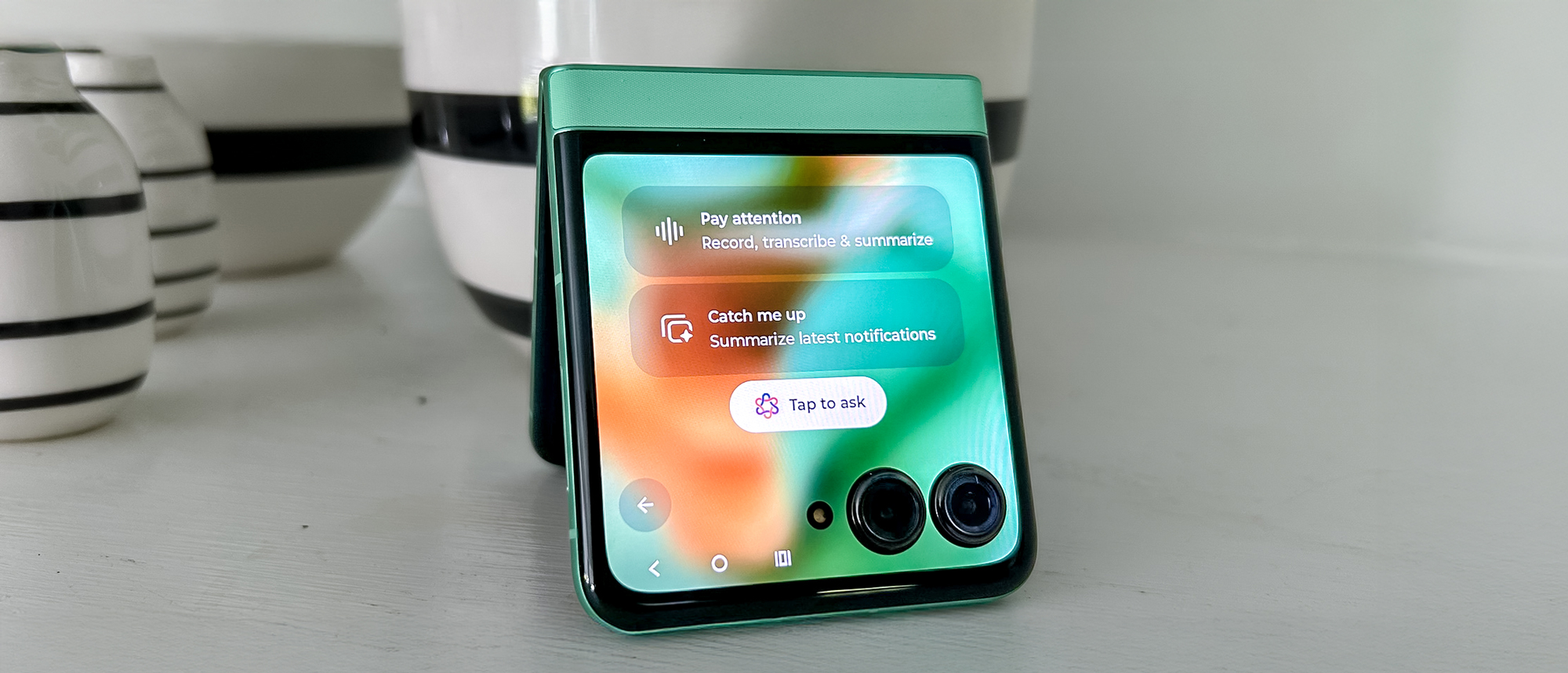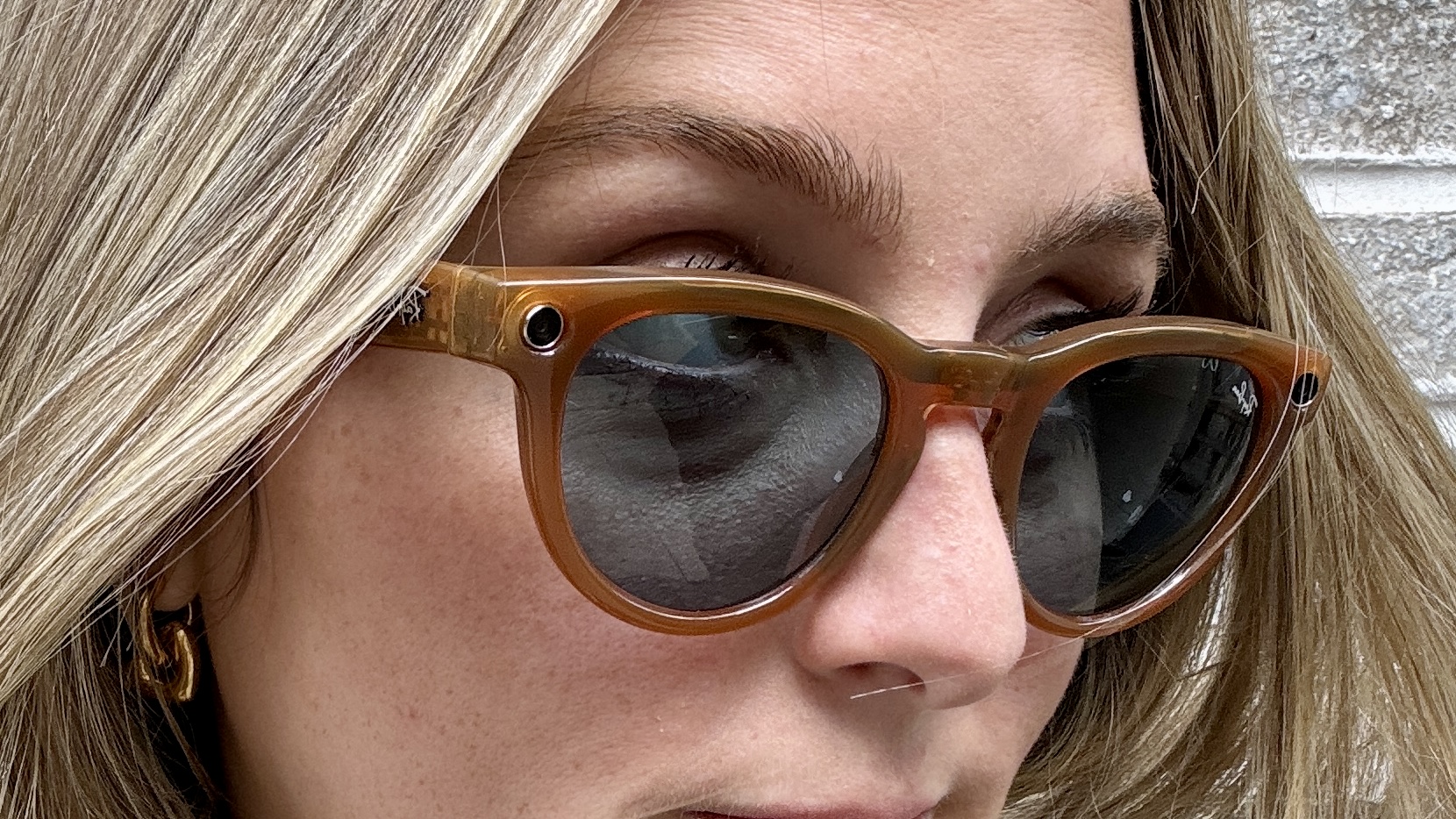Tom's Guide Verdict
Like its predecessors, the Motorola Razr (2025) remains the best foldable phone for anyone on a budget. Performance and camera trade-offs aren't that big, but the difference in price from more fully-featured flip phones certainly is. And features like Moto AI capabilities, a bright display and a long-lasting battery deliver real value.
Pros
- +
Same AI features as other new Razr phones
- +
Better-than-average battery life
- +
Eye-catching colors
- +
Bright display
- +
Still less than $700
Cons
- -
Only slight improvement to low-light photos
- -
Only 3 years of software support
- -
Low CPU and GPU benchmarks compared to other foldables
Why you can trust Tom's Guide
Past Motorola Razr models have proven you don't need to spend big to enjoy a solid foldable flip phone. And that's good news now that the Motorola Razr (2025) is available as a low-cost alternative to the premium Motorola Razr Ultra (2025). If you don't have the $1,299 to spend on the Ultra, the regular Razr puts a foldable phone in your hand at a fraction of the cost.
But other phone makers have taken notice of the success Motorola has enjoyed by offering more affordable versions of its flip phones. Samsung's Galaxy Z Flip 7 may have claimed the top spot in our best foldable phone rankings, but there's now a lower-cost version of that phone, the Galaxy Z Flip 7 FE, looking to grab the budget-minded shoppers who might otherwise turn to Motorola.
Does the latest Razr offer enough to keep those shoppers from turning to Samsung and its assorted Flip models? And what sacrifices do you have to make in exchange for the Razr's reduced price compared to more premium flip phones? My Motorola Razr (2025) review looks to answer both questions.
Motorola Razr 2025 review: Specicifcations
Motorola Razr 2025 | |
Starting price | $699 / £799 / AU$1,199 |
Inner display | 6.9-inch AMOLED (2640 x 1080; 165 Hz) |
Outer display | 3.6-inch pOLED (1066 x 1056; 90 Hz) |
Chipset | MediaTek Dimensity 7400X |
RAM | 8GB |
Storage | 256GB |
Rear camera | 50MP main (f/1.7), 13MP ultrawide (f/2.2) |
Front camera | 32MP (f/2.4) |
Battery | 4,500 mAh |
Wired charging | 30W |
Wireless charging | 15W |
Dimensions | 2.91 x 6.74 x 0.29 inches (open), 2.91 x 3.47 x 0.62 inches (closed) |
Weight | 6.63 ounces |
Colors | Pantone Spring Bud, Pantone Gibraltar Sea, Pantone Parfait Pink, Pantone Lightest Sky |
Motorola Razr 2025 review: Price and availability
The Motorola Razr 2025 debuted at the same time as the rest of Motorola's new foldable flip phone lineup, which includes the Razr Plus and the Razr Ultra. The standard Motorola Razr is the cheapest of the bunch, with a starting price of $699. That's $300 less than the Motorola Razr Plus and a full $600 cheaper than the Motorola Razr Ultra 2025.
More important, you can get the standard Razr for less than both the $1,099 Galaxy Z Flip 7 and the Galaxy Z Flip 7 FE, which at $899 is supposed to be Samsung's answer to Motorola's lower-cost offering. On paper, at least, Samsung is going to need to come up with a cheaper answer to compete with this particular model.
That $699 buys you a Razr with 256GB of storage and 8GB of memory. In addition to buying the phone unlocked through Motorola and Amazon, you'll find the Razr at carriers such as Verizon and Visible.
In the U.K. and Australia, where the phone is sold as the Razr 60, you'll pay £799 or AU$1,199, respectively.
Get instant access to breaking news, the hottest reviews, great deals and helpful tips.
Motorola Razr 2025 review: Design
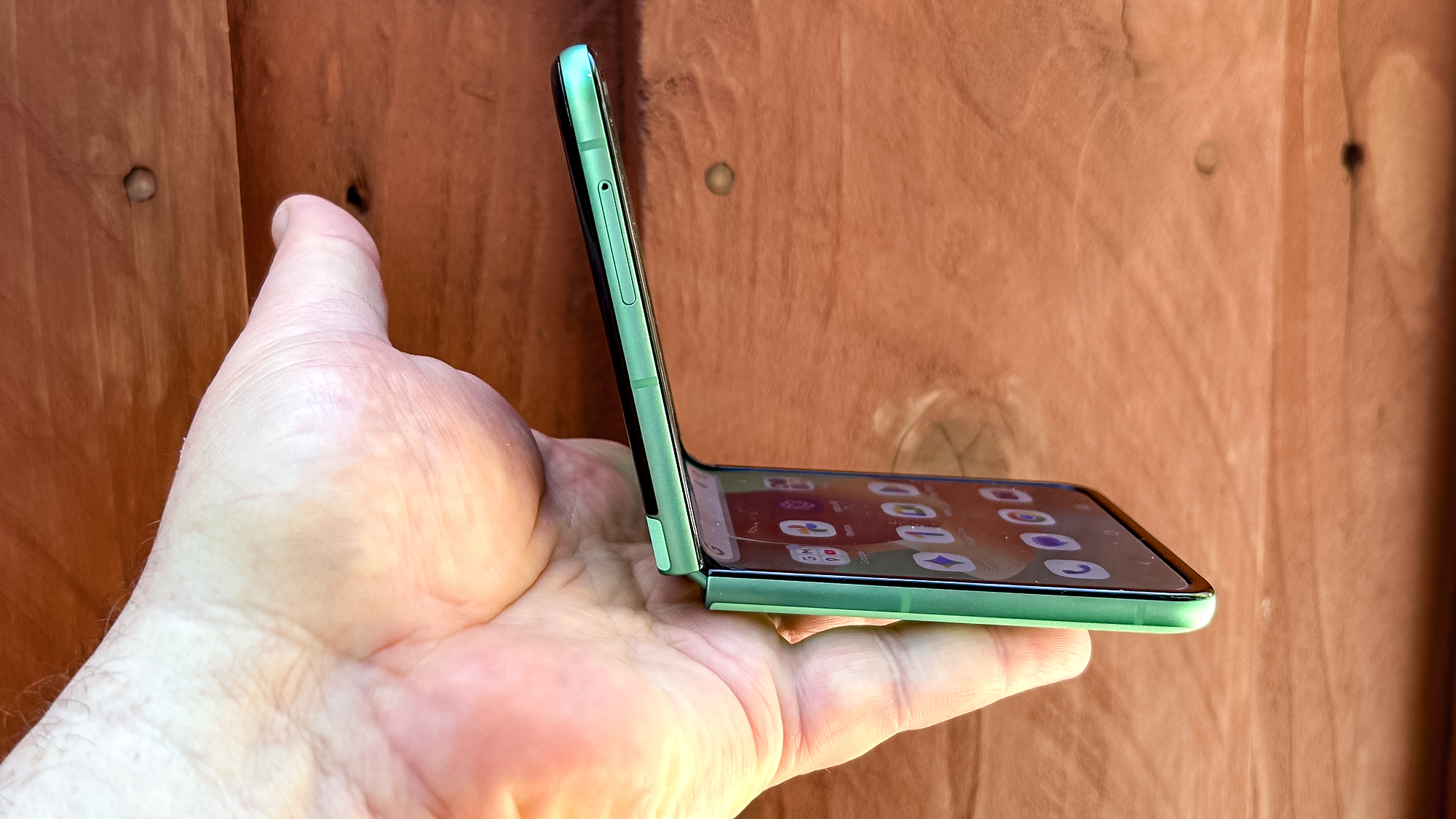
Though the Razr 2025 is the cheapest of Motorola's three new foldables, it actually bears a strong resemblance to the Motorola Razr Ultra. The two models share the same 2.9 x 3.5 x 0.62-inch dimensions when folded shut, and the standard Razr actually weighs roughly 0.4 ounces less.
The biggest differences are in the materials. The standard Razr features Gorilla Glass Victus rather than the more durable Gorilla Glass Ceramic found on the Ultra. And instead of the different finishes you find on the Razr Ultra, the 2025 Razr sports a textured vegan leather back, at least on the half of the phone that doesn't feature the cover display. That's hardly a complaint, as I think the vegan leather material outkicks the Razr's midrange roots — it certainly gives the phone a grippier feel than you'd get from a metal or plastic back.
The cheaper Razr comes in a variety of Pantone color choices in Sea (a dark blue), Parfait Pink, Lightest Sky (a silvery white) and Spring Bud. That's the mint green color of my review unit, and it really adds a splash of personality to make this Motorola flip phone stand out in a mix of black and white clamshell models.
The Razr 2025 also benefits from the reinforced hinge that Motorola features on its other flip phones, so you should be able to open and close your phone without incident. IP48 water and dust protection means your phone can withstand a dunk in 1.5 meters of water, though smaller dust particles pose a challenge, as they do for most foldable phones.
Motorola Razr 2025 review: Display
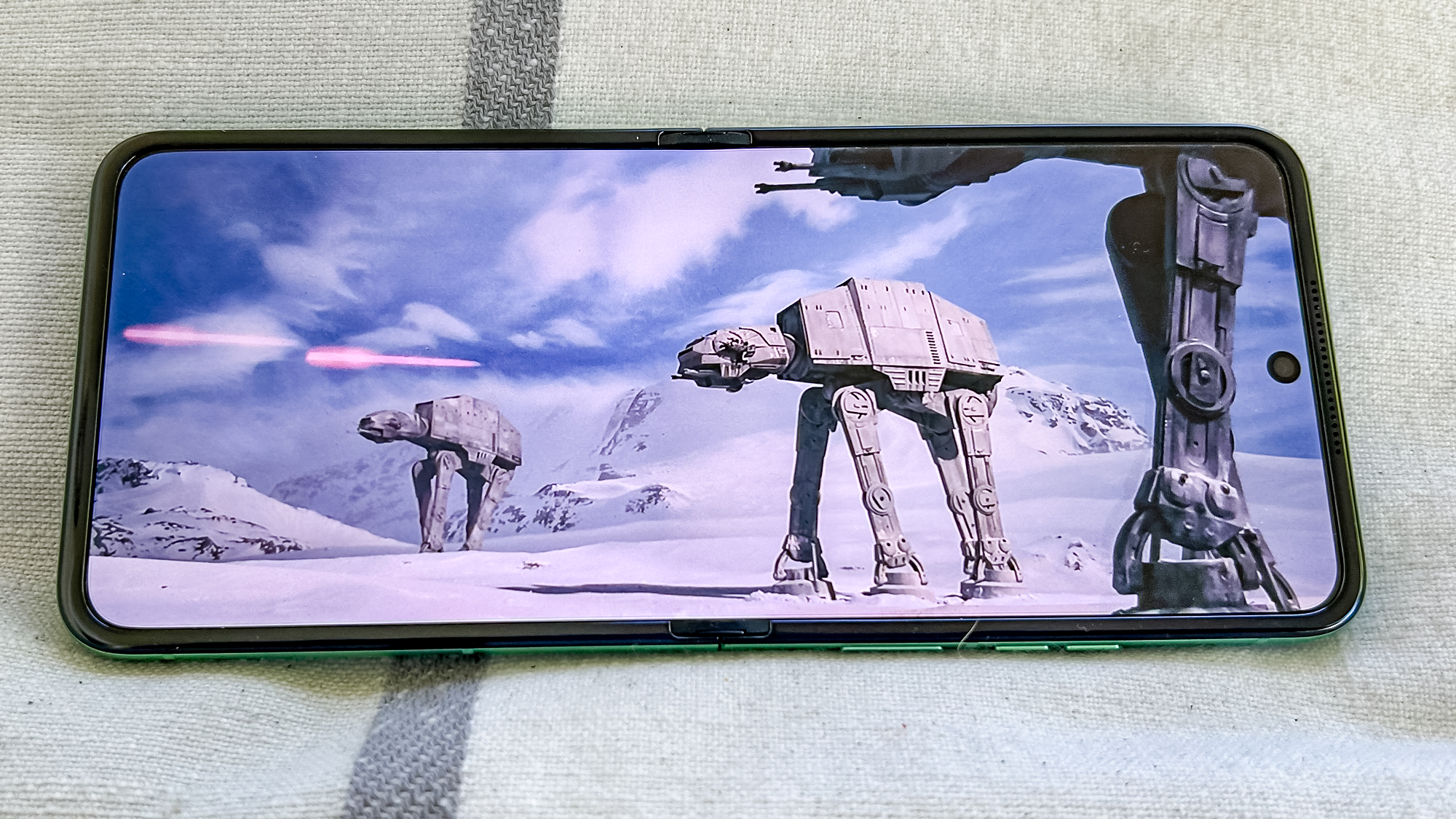
Nothing's really changed from the Motorola Razr (2024) in terms of screen size — the 2025 model still sports a 6.9-inch internal display and a 3.6 cover screen, with each panel offering refresh rates of 165Hz and 90hz, respectively.
What has changed is how the standard Razr's screens compare to other flip phones. For instance, a noticeably thinner bezel on the Razr Ultra's cover display gives you a 4-inch area to work with. Likewise, the Galaxy Z Flip 7 has a larger 4.1-inch outer screen as well, suggesting that the smaller secondary panel is the price you pay if you opt for a cheaper flip phone.
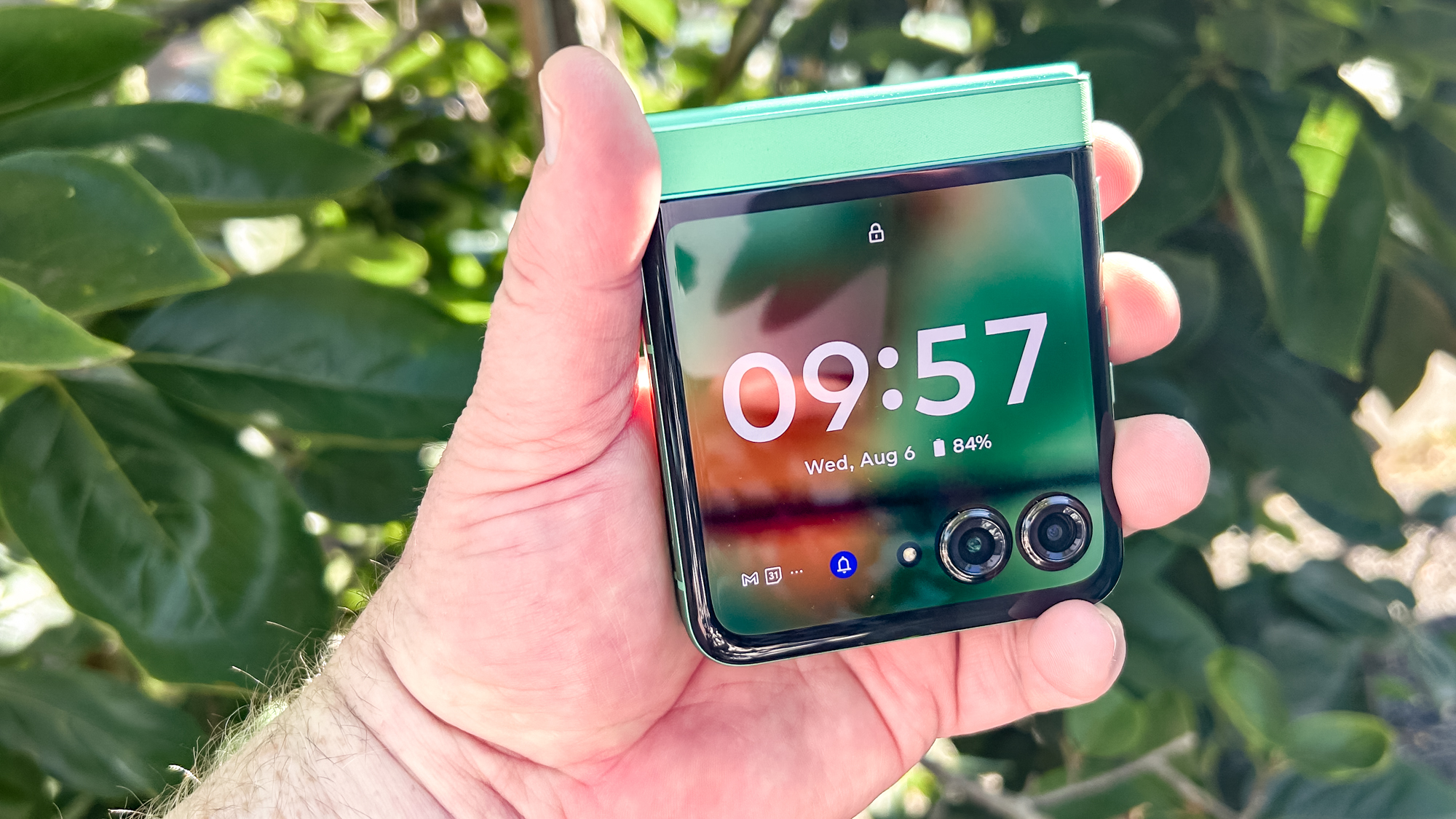
That said, it's a trade-off I'm happy to make, as I'd save anywhere from $4000 to $600 by opting for the Razr (2025). The 3.6-inch outer display doesn't feel that cramped, as I'm still able to run apps without ever opening my phone. And the 6.9-inch panel that awaits when I open the phone compares favorably to what I get from the Razr Ultra (7 inches) and the Z Flip 7 (6.9 inches).
| Row 0 - Cell 0 | Motorola Razr (2025) | Motorola Razr Ultra (2025) | Samsung Galaxy Z Flip 7 |
Brightness (nits) | 1,916 | 1,835 | 1,989 |
sRGB % | 207.3 (Vivid) / 129.6 (Natural) | 214.3 (Vivid) /123.2 (Natural) | 151.7 (Vivid) / 126.7 (Natural) |
DCI-P3 % | 146.8 (Vivid) / 91.8 (Natural) | 151.8 (Vivid) / 87.3 (Natural) | 107.4 (Vivid) / 89.8 (Natural) |
Delta-E rating (Closer to 0 = better) | 0.34 (Vivid) /0.21 (Natural) | 0.33 (Vivid) / 0.26 (Natural) | 0.23 (Vivid) /0.23 (Natural) |
You may be giving up screen space with the Razr 2025, but you're not sacrificing screen brightness. At a maximum reading of 1,916 nits on our light meter, the Razr 2025 is slightly brighter than the 1,835-nit Razr Ultra, and not far off the pace of the Galaxy Z Flip 7 and its 1,989-nit reading.
Like the Ultra, the Razr shows off more colors, to the point of almost being oversaturated, compared to the Galaxy Z Flip 7. It certainly captures higher percentages of the sRGB and DCI-P3 color spectrums than the 2024 Razr, which topped out at 189.1% and 134%, respectively, in its Vivid setting.
The colors on the Razr 2025 are more accurate than last year's phone, though you have to switch the Razr (2025) display to a natural setting to approach the color accuracy of the Galaxy Z Flip 7.
Watching "The Empire Strikes Back" on the Razr's main display, the AT-AT walkers emerged from the icy environs of the planet Hoth, with their striking gray exterior contrasting against the blue sky. And in the "Highest 2 Lowest" trailer on YouTube, the red lights bathed Denzel Washington's skin in a dimly light scene, while the red, white and blue colors of the Puerto Rican flags popped in brighter settings.
Motorola Razr 2025 review: Cameras
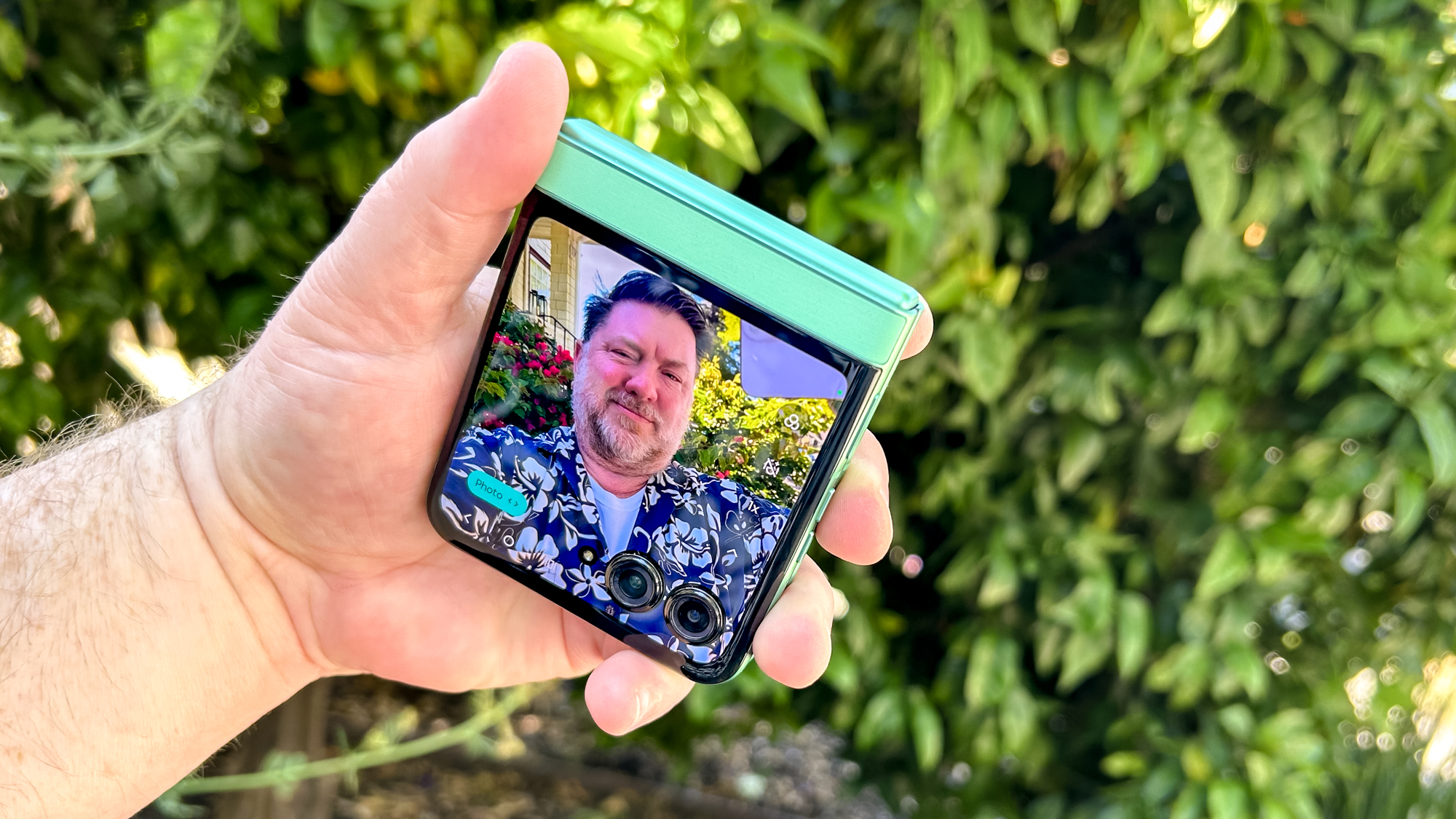
Forget about the telephoto lens that comes on the more expensive Razr Plus model or the Ultra's higher-resolution ultrawide camera — the standard Razr plays it safe with a 50MP main shooter and a 13MP ultrawide camera on the cover display, along with a 32MP selfie cam when you open up the phone.
If these camera specs sound familiar, it's because they match what the Motorola Razr (2024) offered, right down to the 120-degree field of view on the ultrawide lens. They're also remarkably similar to the camera specs of both the Galaxy Z Flip 7 and the lower-cost Galaxy Z Flip 7 FE. (Those phones have a 12MP ultrawide camera to the Razr's 13MP shooter, and the front camera tops out at 10MP.)
I'll have my colleague John Velasco test Motorola's cheapest foldable against those Samsung models to see if the Razr can hold its own on the camera front. For now, I went out a shot a bunch of photos with both the 2025 and 2024 Razrs to see if Motorola continues to improve its photo processing powers, particularly in low-light where the Motorola Razr (2024) struggled last year.
I saw some slight improvement when shooting a mural at dusk. The 2025 Razr did a much better job balancing the yellow light of a nearby streetlamp than the 2024 model was able to, even if I think there's too much shadow on the left side of the girl's face. But the Razr 2024 shot is too washed out to be something I'd like to share.
The Razr 2025 doesn't fare as well when the lights are lower, as there's not much focus in the shot of an agapanthus plant after the sun went down. Still, the 2025 model does manage to tease some color out of the petals, something that's beyond the Razr 2024's capabilities.
These two shots are among the better composed ones I took at night with the Motorola Razr (2025), by the way. While the night photos have improved marginally year over year, I still wouldn't be terribly confident in the quality of any low-light photos captured by the phone.
Things are much better in good lighting. A close-up of a Matilija poppy looks sharp when photographed by either the 2025 or 2024 Razr, though I detect slightly more detail in the petals of the 2024 shot. Still, both phones managed to capture the flecks of yellow pollen on the white petals, while keeping the full shot of the flower in focus.
There's also very little separating this photo of a fried chicken sandwich, with both Razrs getting all the color details right, from the green of the lettuce and jalapeño peppers to the day-glo orange hot sauce. I think the Razr 2025 loses a little focus on the right side of the shot, but its recreation of the air bubbles in the sandwich roll look a little sharper to my eye.
Portrait mode seems better on the Razr (2025), as my daughter's skin is warmer and more consistent in that camera phone's shot. The 2024 model offers a more washed-out look, and even her hair isn't as vibrant as the 2025 model depicts it.
That said, I'm not terrible impressed with the bokeh effect produced by either phone. There's some background blur in the immediate radius around my daughter, but some of the orange tree leaves at the further edge of the shot are more in-focus than I'd like. It pulls some of the emphasis away from my daughter, who really should be the centerpiece of this shot.
One of the benefits of a flip phone is that you can use the more powerful main camera to take a selfie, with the device's cover screen serving as a view finder. The main camera on the Razr 2025 delivers a sharp, richly colored self-portrait with warm skin tones similar to the ones that made that portrait shot of my daughter so appealing. I do think the focus is a little soft in the 2025 photo compared to the selfie snapped by the Razr 2024.
As for the 32MP selfie cam on the main display of the Razr, the 2025 model continues the trend of warm skin tones — a positive step for the photo processing on Motorola's flip phone. Otherwise, I'd be hard-pressed to spot any differences from one model to the next.
The same can be said for the ultrawide photos captured by both the 2025 and 2024 Razrs. Colors look equally sharp in both photos, and the ultrawide cameras contend with the shadows on what turned out to be a very sunny day in Oakland.
As you might expect from the identical camera specs, there's not much movement between the photo quality of the Razr 2025 and Razr 2024. The improvements that are visible are in speciality modes like portrait shots and, to a lesser extent, low-light photos, which suggests Motorola has put some effort into boosting image processing on its phones.
Motorola Razr 2025 review: Performance
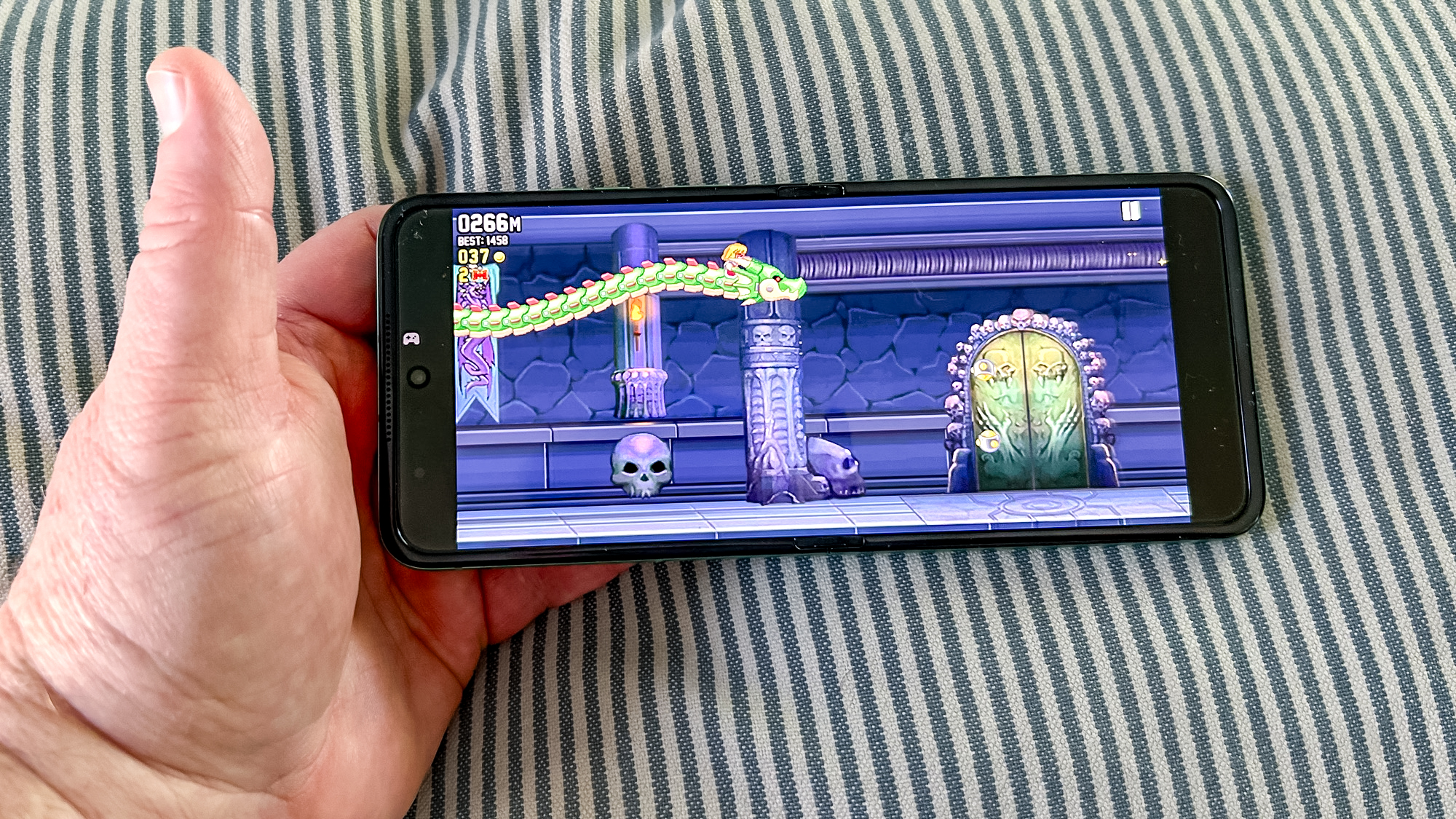
The Ultra model of this year's Razr flip phones may feature a top-of-the-line Snapdragon 8 Elite, but to keep the standard Razr's cost low, Motorola has turned to the decidedly more midrange MediaTek Dimensity 7400X. It's not a bad system-on-chip, and it's certainly up to the demands of most every day tasks, from running apps to support the phone's AI features. But this is no speed demon.
The benchmark results we recorded bear that out. It's no surprise that the Motorola Razr's Dimensity 7400X chipset would lag behind the Snapdragon 8 Elite-powered Razr Ultra (2025), or even the Galaxy Z Flip 7 and its Exynos 2500 silicon when we ran CPU and GPU tests. But the gains over the Motorola Razr (2024) and an older MediaTek Dimensity 7300X chipset are marginal at best.
| Row 0 - Cell 0 | Motorola Razr (2025) | Motorola Razr Ultra (2025) | Samsung Galaxy Z Flip 7 | Motorola Raz (2024) |
Chipset | Dimensity 7400X | Snapdragon 8 Elite | Exynos 2500 | Dimensity 7300X |
Geekbench (single core / multicore) | 1089 / 3075 | 2719 / 8342 | 2286 / 8079 | 1055 / 2999 |
3DMark Wild Life Unlimited (FPS) | 22.2 | 145.3 | 114.6 | 19 |
Adobe Premiere Rush video transcoding (Mins:Secs) | 1:21 | 0:59 | 1:04 | 0:54 |
On Geekbench, which measures CPU performance, the newer Razr posted gains of 3% over the 2024 Razr in both the single- and multicore tests, suggesting a minimal year-over-boost. The 3DMark Wild Life Unlimited graphics test saw the 2025 Motorola Razr's frames per second inch up to 22.2 from just under 19. And it actually took this year's phone 27 seconds longer to transcode a video using Adobe Premiere Rush.
In real word use, the Dimensity 7400X performs well enough, handling switching between apps and Google's Gemini Assistant. I'm not going to pretend that PUBG Mobile gameplay was the smoothest I've encountered — there were a few stutters when scenes would load — but side-scrolling games like Jetpack Joyride played just fine.
If you accept the fact that you're not getting world-beating performance with this phone — and if you're shopping for a sub-$1,000 foldable device, that's probably a compromise you're comfortable making — you won't be disappointed by the good-enough experience of running apps and playing games on the Razr 2025.
Motorola Razr 2025 review: Software and AI
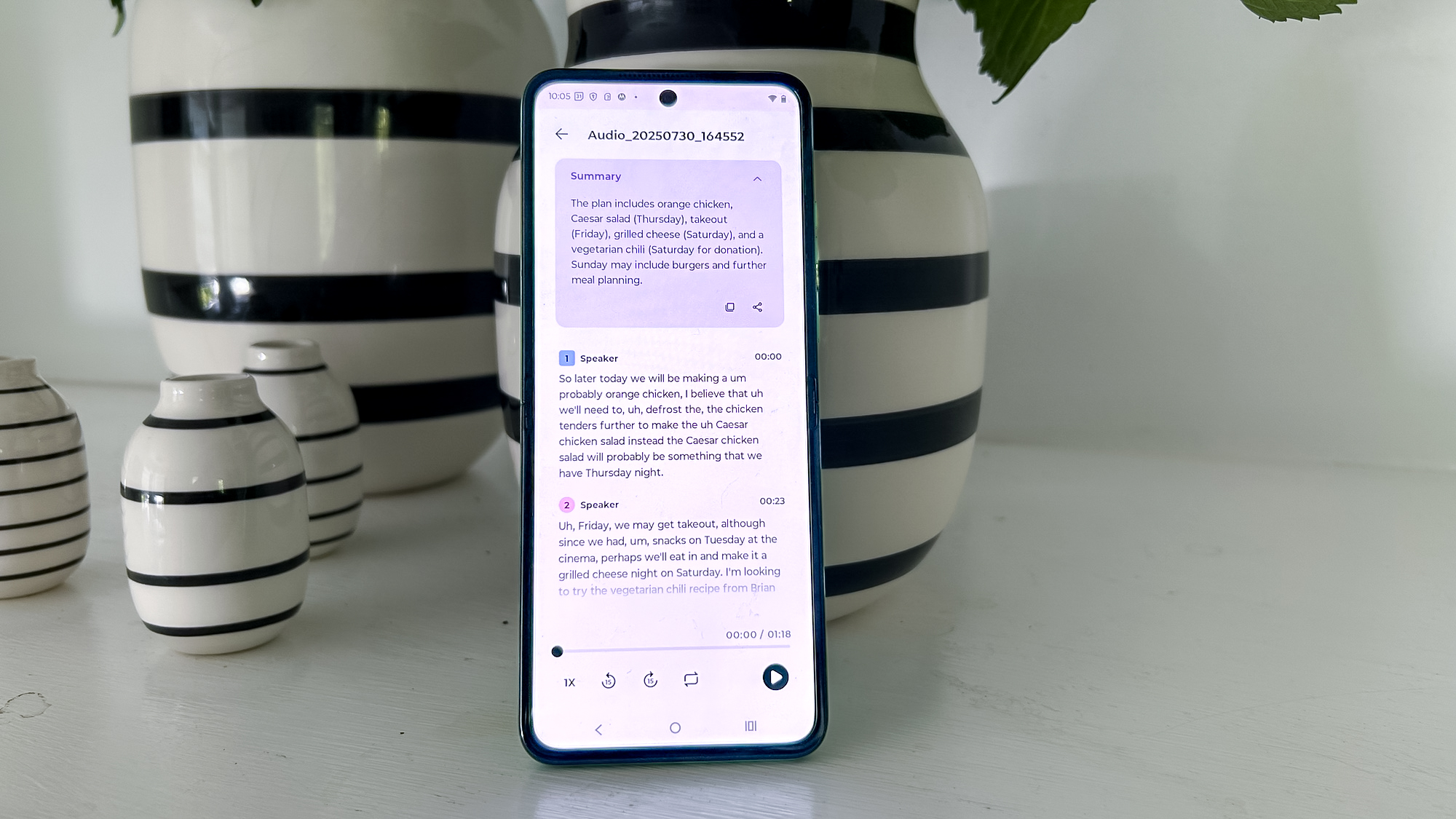
Motorola has jumped into the AI mix, and while the features available on the Razr (2025) aren't as extensive as the Galaxy AI capabilities Samsung includes on both new models of its Z Flip phone, they prove to be pretty useful additions. More important, they're the same ones you'll find on Motorola's more expensive Razr models, so you're not short-changing yourself by opting for the entry-level Razr, at least not when it comes to AI.
Of the AI capabilities on board the Razr, I found Remember This to be the most useful. Let's say I come across an article or a recipe or something else I want bookmarked for later. I can touch the Moto AI logo on the side of the Razr's display and then select Remember This. I can even store a phrase I'm likely to remember, so that when I ask the on-board assistant to help me recall what I saved, I can just use that search phrase.
Pay Attention also proved to be useful in my testing. This feature turns your phone into a voice recorder, capturing voice memos, lectures and discussions in meetings. You'll get an auto-generated transcript and summary — the transcripts of my recording proved pretty accurate in my testing, though the summaries occasionally missed key details.
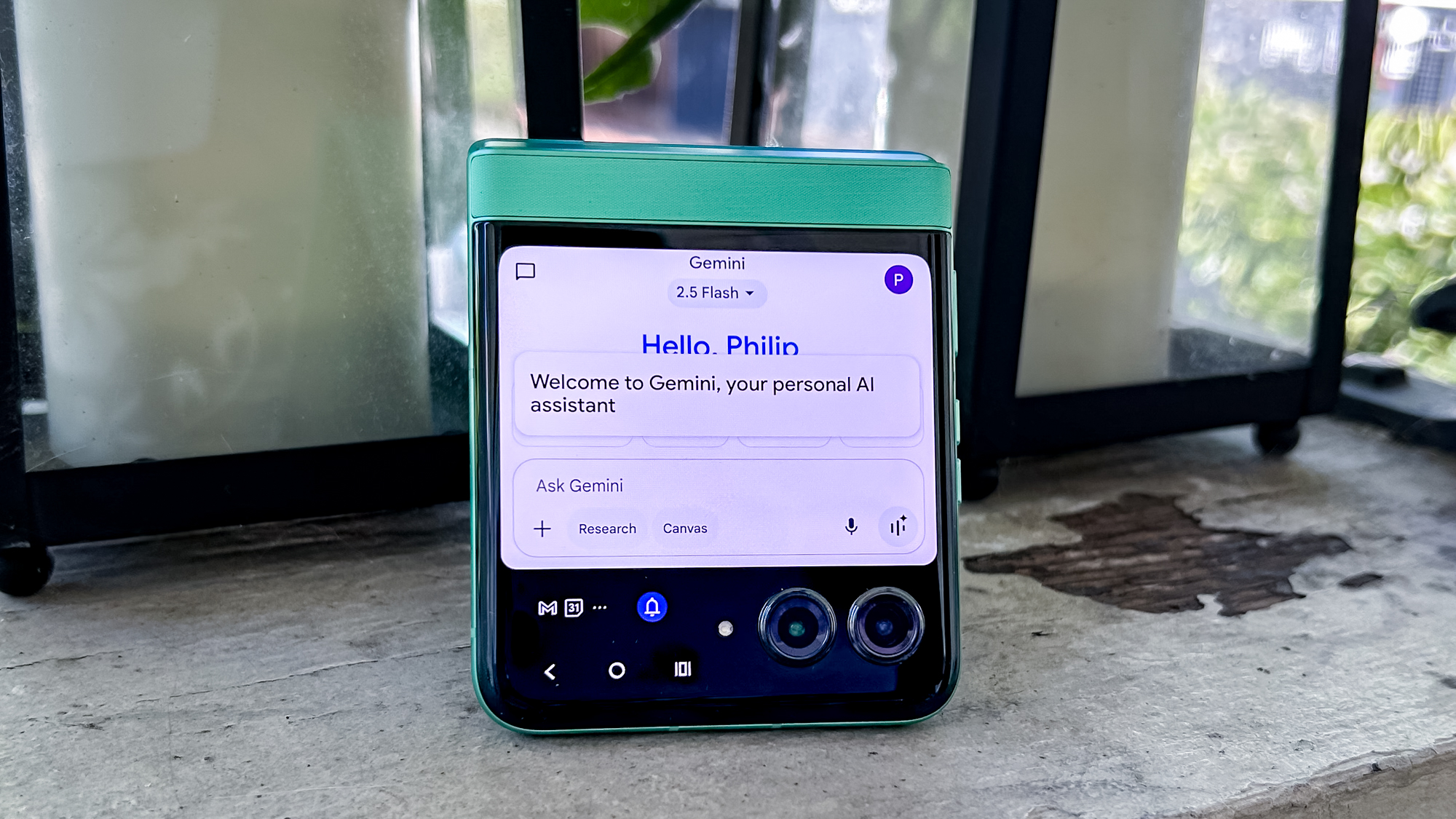
A third AI feature, Catch Me Up, summarizes all your incoming notifications to let you know who's called or messaged you while you were focusing on different tasks.
I generally like Motorola's take on Android, where additions like gesture shortcuts are generally helpful. (As an example, a twist of your wrist activates the camera of the Razr when it's folded shut so you can use the cover screen as a view finder.) I'm less enamored with Motorola's lackluster support policies — just three years of software support for the Razr (2025) when the most recent Galaxy Z Flip releases can count on seven years.
Motorola Razr 2025 review: Battery life and charging
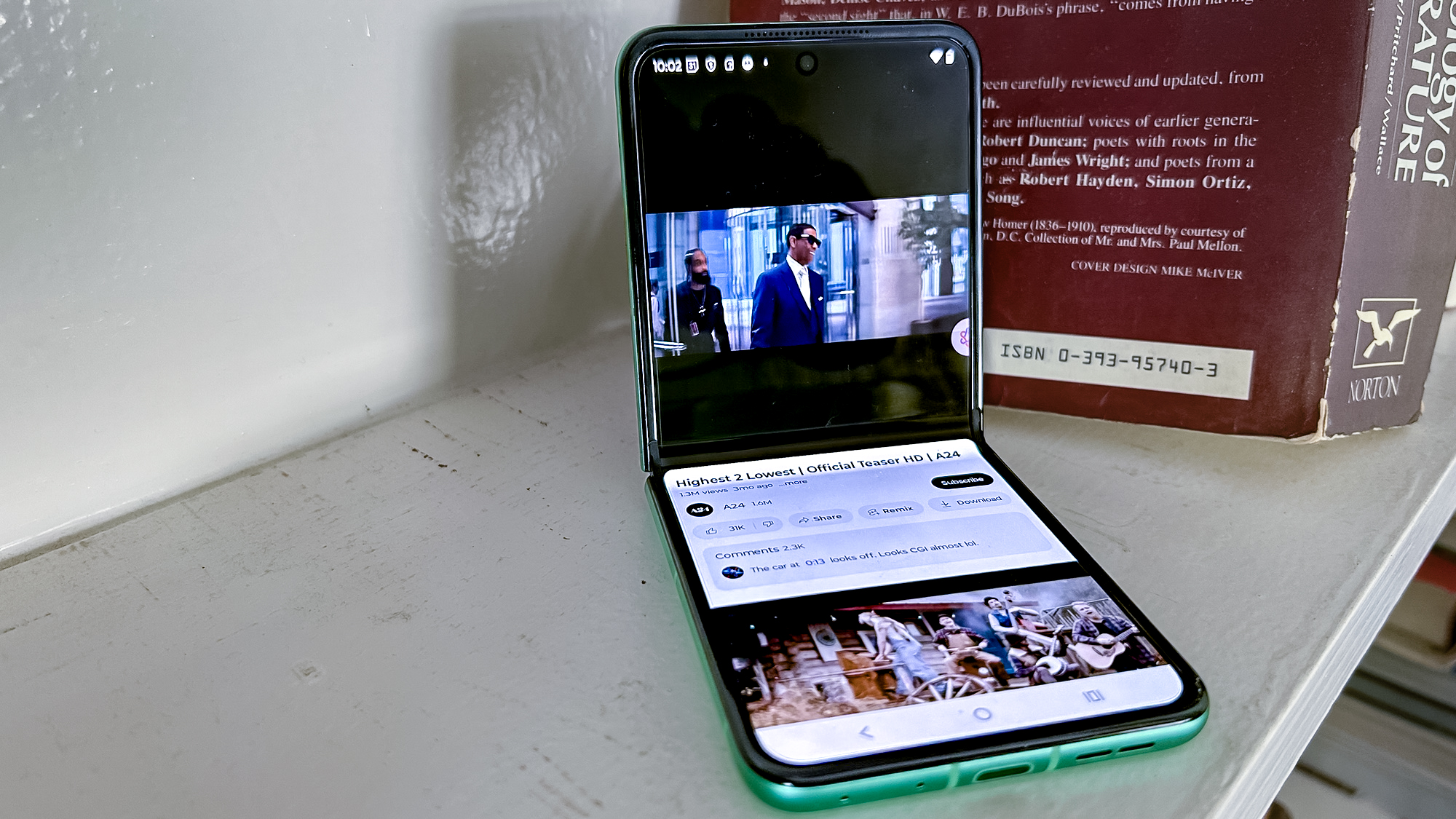
It's not surprising to see Motorola phones last long on a charge — not even foldables, which tend to draw a lot more power than a standard handset. Motorola devices are mainstays on our best phone battery life list, and that includes the Razr Ultra.
Sadly, the standard Razr can't quite reach those lofty heights, though its 4,500 mAh battery is a touch smaller than the 4,700 mAh power pack Motorola equips the Ultra model with. Still, the standard Razr lasted 13 hours and 36 minutes on our battery test, in which phones surf the web until they run out of power.
That time is around 3 hours better than the average smartphone we test. It also beats the Galaxy Z Flip 7, which ran out of power just shy of the 12.5 hour mark. So you're getting a longer-lasting phone for less if you turn to Motorola's entry-level flip phone.
I like the fact that the Razr supports wireless charging — it's not a feature that midrange phones always offer. And while the 30W wired charging speeds for the 2025 Razr aren't blazing fast, they'll get the job done when you need to top off the battery. Using a 45W Samsung charger, we got the Razr to a 42% charge after 30 minutes of powering up a drained phone.
Motorola Razr 2025 review: Verdict
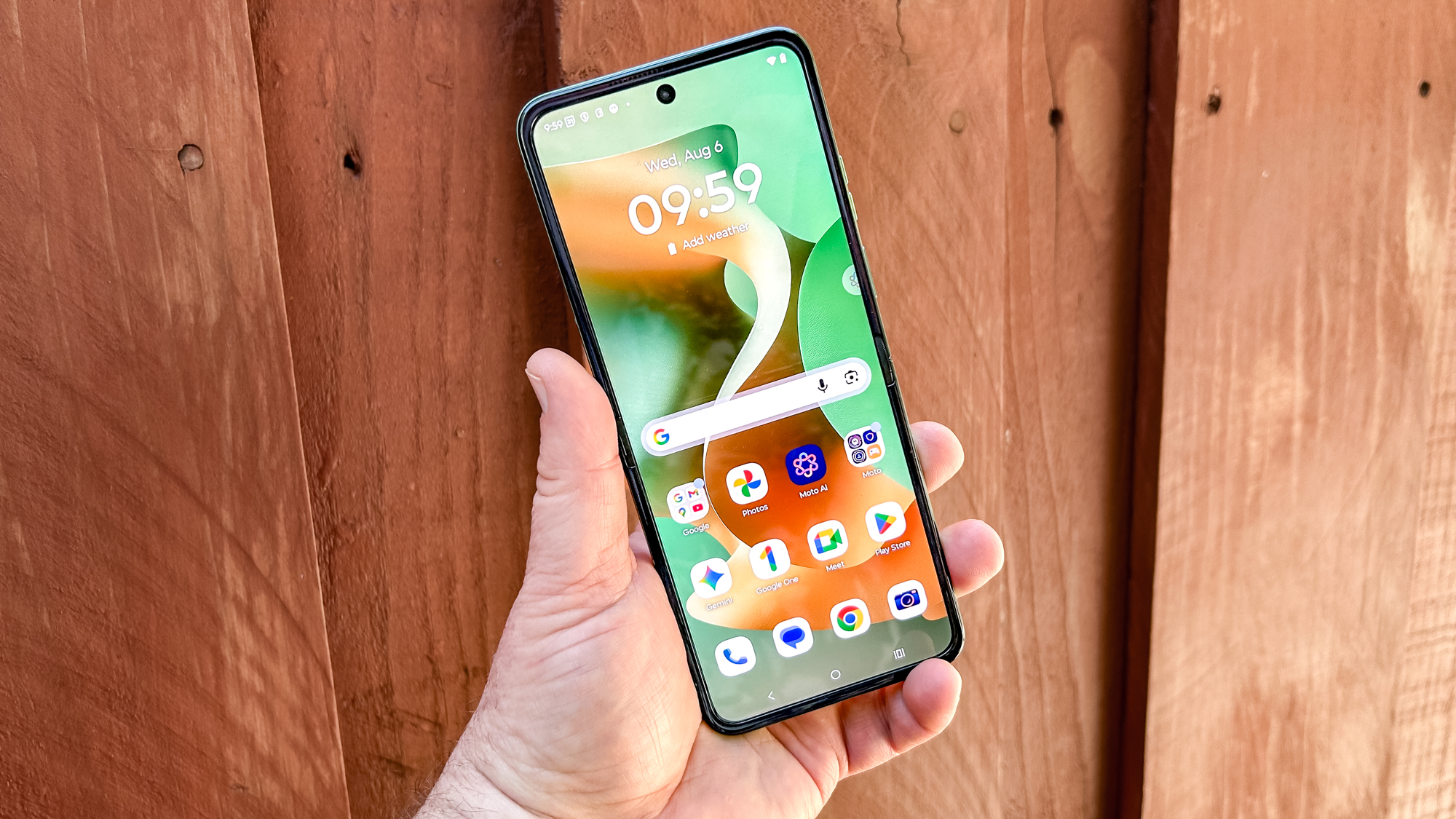
The entry-level Razr continues to deliver good value for money, with a durable design, long-lasting performance and the same AI features found on more expensive Motorola models. The cameras produce good-enough photos in most circumstances, and the less-than-robust chipset is unlikely to cause most users much fuss. If you want a foldable phone that doesn't break the bank, the 2025 Razr delivers.
The question as to whether the Razr is a better option than Samsung's low-cost Galaxy Z Flip 7 FE is one I can't answer until I — or one of my Tom's Guide colleagues — spends more time with Samsung's phone. On paper, at least, the Razr feels like the more appealing option. It may not have the extensive AI tools found on a Samsung phone, but the Flip phones we have tested struggle to keep up with Motorola's models when it comes to battery life. And the Razr remains $200 cheaper than the reduced price for Samsung's FE model.
Unless you really long for the full Galaxy AI experience or prefer the longer software support Samsung provides its phones, there's no need for bargain hunters to look beyond the Motorola Razr (2025) if they're looking for the best value among foldable phones.
Follow Tom's Guide on Google News to get our up-to-date news, how-tos, and reviews in your feeds. Make sure to click the Follow button.
More from Tom's Guide
- iOS 26 Liquid Glass icons — how to get the stunning new look on your iPhone
- Apple announces $100 billion investment in US — here's what it means for the iPhone
- Thieves hate this iPhone feature — how to enable Stolen Device Protection
Philip Michaels is a Managing Editor at Tom's Guide. He's been covering personal technology since 1999 and was in the building when Steve Jobs showed off the iPhone for the first time. He's been evaluating smartphones since that first iPhone debuted in 2007, and he's been following phone carriers and smartphone plans since 2015. He has strong opinions about Apple, the Oakland Athletics, old movies and proper butchery techniques. Follow him at @PhilipMichaels.
You must confirm your public display name before commenting
Please logout and then login again, you will then be prompted to enter your display name.
